Leading In An ‘Individualist’ World
Top Trending Posts

As leaders, we are most often charged with the responsibility of getting things done through the way we mobilise resources, including human beings, which involves communicating, relating and coordinating.
This requires us to engage and enrol those we work with in a shared vision. It implies that we connect each individual’s ‘why’ with the shared ‘why’.
So, what happens when we have new starters who seem to have a profoundly individualistic sense of what it means to work?
Here’s a great recent example: last week, on a project, a Senior Manager made a request of a Graduate. It was for an essential task, on a time-sensitive project.
Factually, she received an email from the Graduate who shared, “I did not do what you asked because it is not my priority”.
The Senior Manager was not only surprised by the response but incredulous that a staff member, three reporting levels deep within her portfolio, had considered such a message a reasonable response. She was unable to reconcile that they had determined that they had the authority to make that decision themselves.
Aside from the challenge to authority, the main concern for the Senior Manager was her inability to take care of the ‘whole’ and the implications such a decline had for the team and cascading, related work.
You’re probably wondering if the Graduate was a Gen Z – yes, they were. What’s interesting, however, is that the Senior Manager is a Millennial. So, let’s not use intergenerational excuses as labels to understand behaviour.
Instead, let’s talk about what we can work on as leaders in terms of mindset, mood and clarifying standards of performance as a way to sustainably overcome a tendency for individualism to show up in the workplace and work towards the collective concern – a shared purpose that helps us get our work done together! Is that not what we are being asked to do when we go to work?
There is a necessary adjustment we need to make as leaders and an equally necessary adjustment we can encourage in our individualists – what it takes to truly team!
As leaders in workplaces, we will likely be taking on more staff members in the future who have been raised in a deeply self-focused era. Shaped by social media, changing legislation favouring employee rights and reinforced by changing norms that have the individual ‘right’ at the centre, leaders will need new ways of thinking about engaging team members and finding ways to deliver outcomes.
It is possible that we can develop a mindset and leadership approach that serves the collective outcome AND the needs and concerns individuals bring with them. It is equally possible that our workplaces become a learning space for individuals to recognise more deeply the constructs that have them behave in certain ways and, where appropriate, learn to evolve these for the sake of the collective outcome.
Here are some practical ways you, as a leader, can begin to seed this transition:
Clarify the Shared Purpose
At the point of employment, it is critical to articulate the shared purpose that everyone in every team contributes to as a part of belonging to the company. This needs to be more than a lofty statement. It is a succinct articulation as to why we exist as a team in the first place and what we are ‘in service of’… together – this is the reason we get paid. If you are clear on this from the outset, it is easy to rely on this as the ‘shared why’ and to bring this up in conversation if someone seems ‘off course’.
Clarify Your Standards of Performance
All too often, as an experienced leader, we have expectations and standards of performance that live inside our heads. Stand in the shoes of your new starters. From here, it’s obvious that, unless you articulate your standards of performance, it will be difficult for them to identify them, particularly if they are new to your team, new to the company or a new worker fresh out of University. We encourage you to write down your expectations of performance and get in a conversation with everyone in your team so that they understand the standards you want them to meet, why, and what that produces when you are all able to meet such standards as a team.
Identify Desirable Behaviours
Culture shows up with behaviours. Culture, often referred to as “the way we do things around here”, lives through the way people care, relate, communicate and coordinate action. Culture is not separate from the way our people undertake their roles but is expressed in the way they do their daily work. If you can be explicit about the team standard for behaviours, and if you build team skills to meet that standard, the team has the greatest possibility of being able to bring those behaviours to life.
Coach to the Gap
It stands to reason that not every person will be able to meet either the standards of performance or the behavioural code from the get-go. Here is where, as a leader, it could be helpful to have a degree of tolerance and compassion and be willing to Coach to the gap. This includes making an observation that helps your staff member understand the behaviour you are observing, comparing this to the behaviour you aspire to see and exploring the gap and ways they can close it. Be mindful of not telling them exactly how to fix it, but instead, like a Coach, help them explore how they think they can close that gap in time – then they are more likely to own the solution.
Become an Astute Listener
As human beings, we all have a prejudice in the way that we listen. It will be critical for you to understand the prejudice you might bring to conversations with your new starters or junior staff members – or those people who show up to you as individualists. If your starting point is resentment, you’ll end up in an unhelpful conversation quickly. Instead, it will be helpful for you to recognise that the person you are dealing with may be unaware of how to communicate and act as a team member because they have always been able to operate ‘for themselves’ above all. That is, as a listener, be open to the idea that they may have a blindness to their behaviour rather than a malicious intent. If you listen from this place, more possibilities become available.
Check-in on the Humans!
During the last 10 years, leaders have been asked to take on more roles and responsibilities in terms of the welfare of their team members. Prior to that, considerations may have been more task-oriented. However, we now understand that the whole human being comes to work and that our sense of self-esteem, satisfaction and belonging drives productivity and performance. Ultimately, for all of us, it matters that someone cares about us within the workplace. For this reason, it’s important to check-in on your people at the human level. This can be as simple as a regular 10-minute chat or making time for a conversation each month to check in on how each person is going.
Focus on Accountability
Assuming that you have been able to achieve everything else we have mentioned here, the icing on our cake is the opportunity to hold people accountable to their commitments. This assumes that you make clear requests to your staff, secure reliable commitments from your staff and if they are not delivering to your standards, you engage them in a conversation to address the gap. Although some people consider this a difficult conversation, begin practising doing this as regularly as possible for the sake of offering feedback, understanding skill and capability gaps, and using the gaps as positive conversations that ultimately result in lessons learned. Over time, this conversation becomes a normal part of leadership practice and how you do business. The feedback will lift collective performance so long as your intent, mood and delivery of such conversations are engaging.
In the fast-moving context within which we all live and lead, the organisations that thrive – and survive – will be learning organisations. Organisations willing to ‘shape up their leadership practices’ for the sake of stakeholder and shareholder value. This will require conscious leadership founded in clarity of thinking, clear communication, the ability to build trust and relationships and effective coordination to produce outcomes that fulfil a shared purpose.
Maybe we can reverse the trend to show up to work ‘just for me … and the pay cheque’? Maybe through new leadership disciplines, we can create conditions for human beings within workplaces to evolve and innovate, express ingenuity and demonstrate a willingness to go beyond what’s asked. We say this is all possible …
If this article has struck a chord with you, and if you wish to develop the skills and practices we identify here or need help executing this kind of transformation within your business, contact us.
Share This
Top Trending Posts
Sign Up
to our blogs and receive regular updates.

Stay in the Conversation
with Liberated Leaders...






